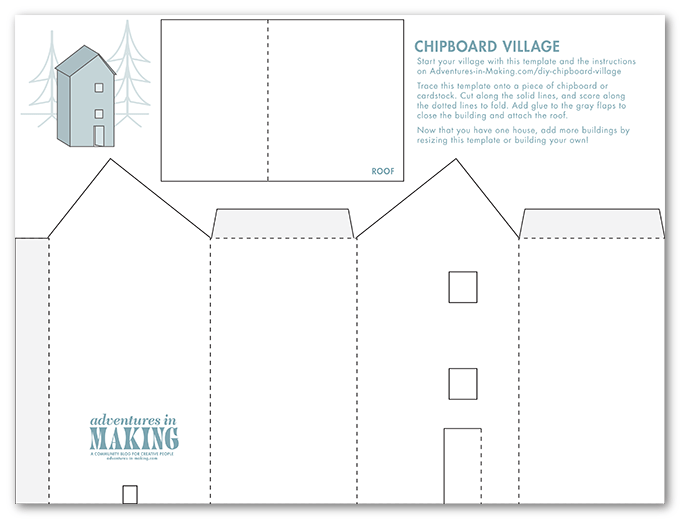
From 2014-2016 I chronicled my crafty endeavors on the site Adventures-in-Making. I’ve selected a few of those DIY’s, Recipes, and other posts to share on the site.
Sometimes I come up with a project that I enjoy so much that it’s hard to stop to write a post. This, my friends, is one of those.
It’s a simple combination of watercolor, melting wax, and punching shapes- but it’s oh so satisfying.
SUPPLIES
- Thick paper for Watercolor
- Watercolor paints and brushes
- Pencil
- Straight Edge
- Paraffin Wax
- Scraping Tool, like a vegetable peeler.
- Iron, ironing board, towel or other surface to catch wiley bits of wax
- Parchment Paper
- Scissors
- Large Thick Material Punches (optional but recommended) I used circle punches in 2″ diameter, 1.5″ diameter, and 1″ diameter
- Small hole punch
- Thin cord or ribbon
- Jump Rings (optional)
Step One: Paint it

Gather your paper, pencil, straight edge, paints and brushes.

Draw several parallel lines with your pencil to create stripes of varying widths.

Begin filling in each stripe with a color in the order of the rainbow. (ROY G BIV – Red Orange Yellow Green Blue Indigo Violet).

If you fill a small stripe, use a similar color next to it (Orange red and Red for instance.) It’s okay if your paint is a little irregular, or you have small white spaces.

Now it’s time to paint the back of your pendant. Draw some non-parallel lines on a new piece of paper, and fill them in with some of the same colors you used on the other side. Leave a little white space as well. Set your paintings aside to dry.
Step Two: Wax it

Now you will need your ironing setup, parchment paper, and wax. You might have a little wax escape during the ironing process, so it’s a good idea to have a scrap towel or cotton fabric to protect your ironing board. Remember to keep an eye on your ironing so you don’t singe anything!

Sandwich one of your dry watercolor sheets inside a piece of parchment paper. Shred a pile of wax on top. (You can always add more wax, so this is a good time to play!)

Turn your iron to it’s lowest setting, and gently melt the wax between the sheets of parchment paper. You will see the paper start to look wet. Continue working the liquid wax into the paper until it starts to be consistently translucent. You may want to add more wax.

Flip your paper over, and add a pile of wax to the other side. This will be the “glue” that holds your two sides together.

Lay the other piece of paper on top of that pile…

shred some more wax on that, and iron again following the earlier instructions.

Continue to add wax until the papers are translucent and consistently wet looking. When you’re happy with the look, put a little bit of weight on the stack, and let it cool for a couple of minutes.
 When it is still warm, but safe to touch, uncover the paper, and use your finger or a tool to smooth any puddles of wax. (Playing in wax is one of my favorite things!) Now let it cool completely (a few minutes.)
When it is still warm, but safe to touch, uncover the paper, and use your finger or a tool to smooth any puddles of wax. (Playing in wax is one of my favorite things!) Now let it cool completely (a few minutes.)
Step Three: Punch it

I am loving these thick material punches from Fiskars. I have long abused normal paper punches, and they have a habit of breaking at the worst possible moment. These punches go through everything like butter.
 Use a punch (or scissors) to take shapes out of your waxed paper…
Use a punch (or scissors) to take shapes out of your waxed paper…

until you have a nice little pile of shapes to work with. To turn solid shapes into pendants, punch small holes on one or two sides. You can run cord through these holes (or attach jump rings.)

After you have everything cut out, polish the shapes by using your fingers to rub excess wax off the surface and edges.

Feed thin ribbon, cord, or chain through the holes in your pendants. You can feed your cord through, wrap it several times, or tie a lark’s head knot. Anything goes! Leave enough room to slip the necklace over your head, and you’re set.

Double sided rainbow pendants!
Now I want to wax all the paper. Someone stop me before I go too far!

 From 2014-2016 I chronicled my crafty endeavors on the site Adventures-in-Making. I’ve selected a few of those DIY’s, Recipes, and other posts to share on the site.
From 2014-2016 I chronicled my crafty endeavors on the site Adventures-in-Making. I’ve selected a few of those DIY’s, Recipes, and other posts to share on the site.























































































































You must be logged in to post a comment.